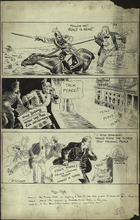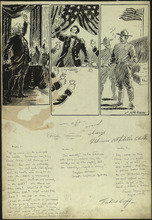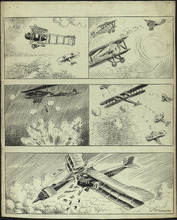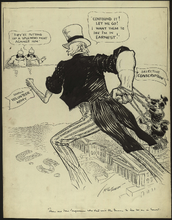JM-184: Peace talk
Model
Image
Description
The cartoon shows the interpreted process of peace talks during World War I. The top panel shows the German people being dragged to peace by the Kaiser Wilhelm II. The second panel shows the Reichstag calling for peace after the kaiser orders them to begin discussions. In 1917, the United States had entered World War I, and Germany's and the Axis powers' chance of victory was becoming smaller and smaller. This made them more willing to negotiate for peace than in previous years of the war. The third panel shows the American stock market falling in value. This drop in the stock market was caused by the peace talks. Supplying weapons and other resources in World War I significantly improved the economy of the United States. Many factories and other means of productions had been created solely to meet the needs of the global conflict. As World War I came to a close, the United States large profits from the war effort began to decline. (Summary created by Mary Delano, MU History Intern, Spring 2018)
Service File - Download





